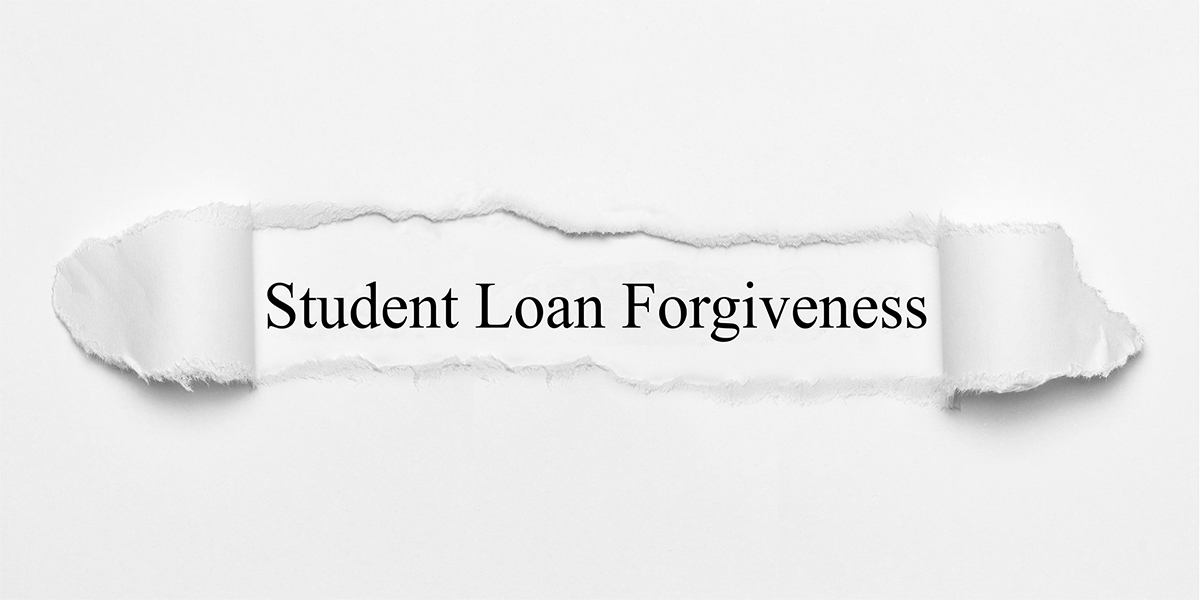
Economic arguments for and against student loan forgiveness have streamed through the media since President Biden last week announced a three-part plan to cancel student debt for low- to middle-income borrowers.
In responses to Brain Trust, Smith experts Michael Faulkender and David Kass give differing perspectives.
Faulkender, dean’s professor of finance, was responsible for implementing the Paycheck Protection Program (PPP) as Assistant Secretary for Economic Policy at the U.S. Treasury. In a Wall Street Journal Opinion piece in late August he argues against equivalencies between student loan forgiveness and PPP forgiveness.
He further critiques the policy in a Fox Business segment – and here:
Despite 40-year high inflation, the last month has seen the Biden Administration add another trillion dollars of stimulus to an economy already suffering from excessive federal spending. On top of the CHIPS Act and the Manchin-Schumer reconciliation bill, now the Administration has proposed relieving hundreds of billions of dollars of student loans and relaxing income-based repayment even further, a program that will primarily help those in the top 60% of the income distribution. This plan is disastrous policy on many dimensions.
- The Federal Reserve is aggressively applying contractionary monetary policy to curb excess demand generated by trillions in over-stimulation. Adding more stimulus will just make the Fed’s job even more precarious. Even larger interest rate hikes will be necessary, increasing the likelihood of putting our economy into recession.
- People with higher levels of education realize higher incomes throughout their working lives. If our economy needed stimulus, why would we provide it to those with above average incomes? Families with incomes of $230,000 should not be receiving $20,000 improvements to their wealth while those who never went to college and make a fraction of this income are getting nothing.
- The moral hazard of this proposal is particularly worrisome. By rewarding those who borrowed money to fund their education and doing nothing for those who entirely paid their college expenses by working during college, it invites more dependency and less work.
- The proposal does nothing to curb the extraordinary inflation in college tuition. Instead, it encourages colleges offering degrees that do not generate marketable skills to nevertheless continue raising prices, since the proposal reduces the likelihood of the student actually paying for it.
- Most problematic is that it lowers income-based repayment to just 5 percent of disposable income meaning that many borrowers will take out loans they know they will never have the ability to pay, and who therefore have no incentive to contain college costs.
Ultimately, this proposal is a bribe to young Americans to vote for the President’s party. As both President Biden and Speaker Pelosi have stated, the President does not have the authority to do this action. Not only is it bad for our economy, it is a usurpation of the authorities granted by the constitution to Congress. For the sake of our republic, the courts must stop this gross abuse of power.
Kass: Economic Pros and Cons
Kass, clinical professor of finance, previously served as a senior economist for the Federal Trade Commission, General Accounting Office, Department of Defense, and the Bureau of Economic Analysis.
He writes:
The principal beneficiaries of President Biden’s student debt relief order will be a large proportion of the 45 million student loan borrowers, with close to 90 percent of these benefits going to individuals earning below the median income of $75,000 per year. Institutions of higher education will also benefit as the demand for their services in the future would be expected to increase as this government program would be subsidizing the tuition and fees charged by these institutions.
The University of Pennsylvania’s Penn Wharton Budget Model estimates that this plan will cost approximately $500 billion over a 10-year period. Economist Jason Furman, who was the head of President Obama’s Council of Economic Advisers, projects that this program would result in a 0.2 – 0.3 percent increase to inflation, as the increase in discretionary income resulting from debt forgiveness will result in an increase in demand, which in turn will drive up prices. This increase in inflation is likely to result in the Federal Reserve slightly raising interest rates further for a longer period of time, which would further weaken the overall economy and raise unemployment.
A recent Bureau of Labor Statistics study concluded that between 2006 and 2016, the Consumer Price Index for “College tuition and fees” increased 63 percent as compared with an increase of 21 percent for all items. Although “College tuition and fees” account for only 1.5% of the overall CPI weight, this program is likely to contribute further to this category continuing to outpace the overall rate of inflation.
Media Contact
Greg Muraski
Media Relations Manager
301-405-5283
301-892-0973 Mobile
gmuraski@umd.edu
Get Smith Brain Trust Delivered To Your Inbox Every Week
Business moves fast in the 21st century. Stay one step ahead with bite-sized business insights from the Smith School's world-class faculty.